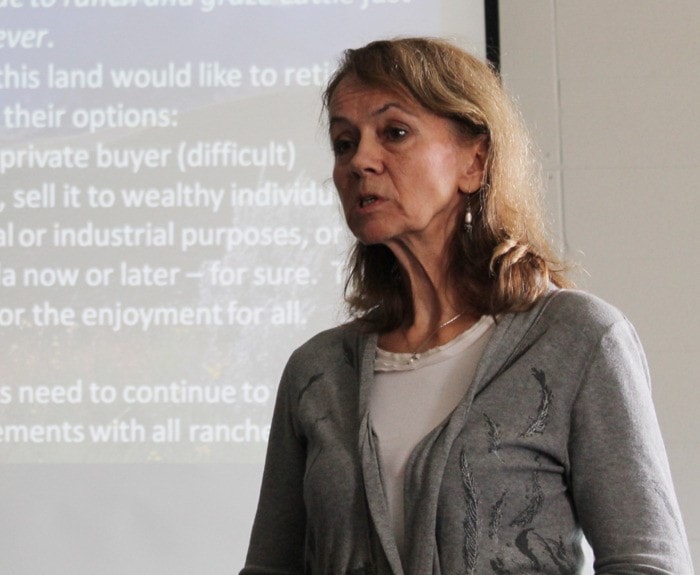A meeting about the benefits of a proposed national park in the South Okanagan packed a room at the Riverside Centre on April 3, with both supporters and opponents having their say.
The crowd - consisting of hunters, ranchers, environmentalists, outdoor recreation users, business owners and others - listened to a presentation by Chloe O’Loughlin from the Canadian Parks and Wilderness Society about how the proposed national park could benefit the South Okanagan.
She said polls have shown the majority of people in the area support a national park, and the creation of one would increase tourism spending by $49 million a year and provide 570 new full-time jobs.
Princeton could benefit from being a “gateway community” to the national park by offering tourists places to stay and eat before they get to their destination, she said.
The proposed national park - which would likely be located between Keremeos and Oliver - would affect 12 ranchers.
“I’ve taken offence at some of the issues you’ve raised, indicating grazing could still be allowed in [the national park] and that ranchers could subdivide their property or sell it for industrial or residential uses,” said local rancher Linda Allison, who stood up to speak after the presentation.
Ranchers currently pay for grazing on Crown land, but this would be more tightly controlled if a national park went in, she said.
O’Loughlin said ranchers should have their grazing rights in writing and legislation so they are never lost if the national park become a reality.
She has spoken to three ranchers who would like to talk to Parks Canada about selling their land so it’s not fragmented.
“There are ranchers who want to retire and not ranch anymore, and it would be good if we kept that land together,” she said.
Keremeos Mayor Manfred Bauer said it’s important to find out exactly what will happen if a national park is created.
“We need numbers, a business case specifically for this park, not Revelstoke or Glacier national parks,” he said.
The government is sitting on an extensive feasibility study about the South Okanagan Park, O’Loughlin said, adding she urges people to ask for it to be made public.
Other members of the audience were concerned about how a national park would affect recreation and hunting opportunities.
The popular Snowy Protected Area has been removed from the national park proposal to help accommodate these groups, O’Loughlin said.
Hunting will be phased out as private land is purchased, but First Nations people will maintain their constitutional right to hunt, according to the Canadian Parks and Wilderness Society.
“Why are we trying to fix something that isn’t broken?” said one man as soon as the presentation was over.
O’Loughlin said a national park will protect endangered animals, as well as bring in more tourists to the valley. This area is one of the three most endangered ecosystems in Canada, but private landowners are not required to protect the 56 endangered species in the area, she said.
“A national park will act as a ‘nursery,’ seeding the region’s unique animals and plants,” says information handed out by O’Loughlin.
She also said a national park’s amenities would draw in young families to the area, which is a good thing for any community.
Parks Canada formally announced its intention to withdraw from public engagement on the national park in an announcement made on the Parks Canada website on Jan.20, but would resume work in the area if more support is added.
